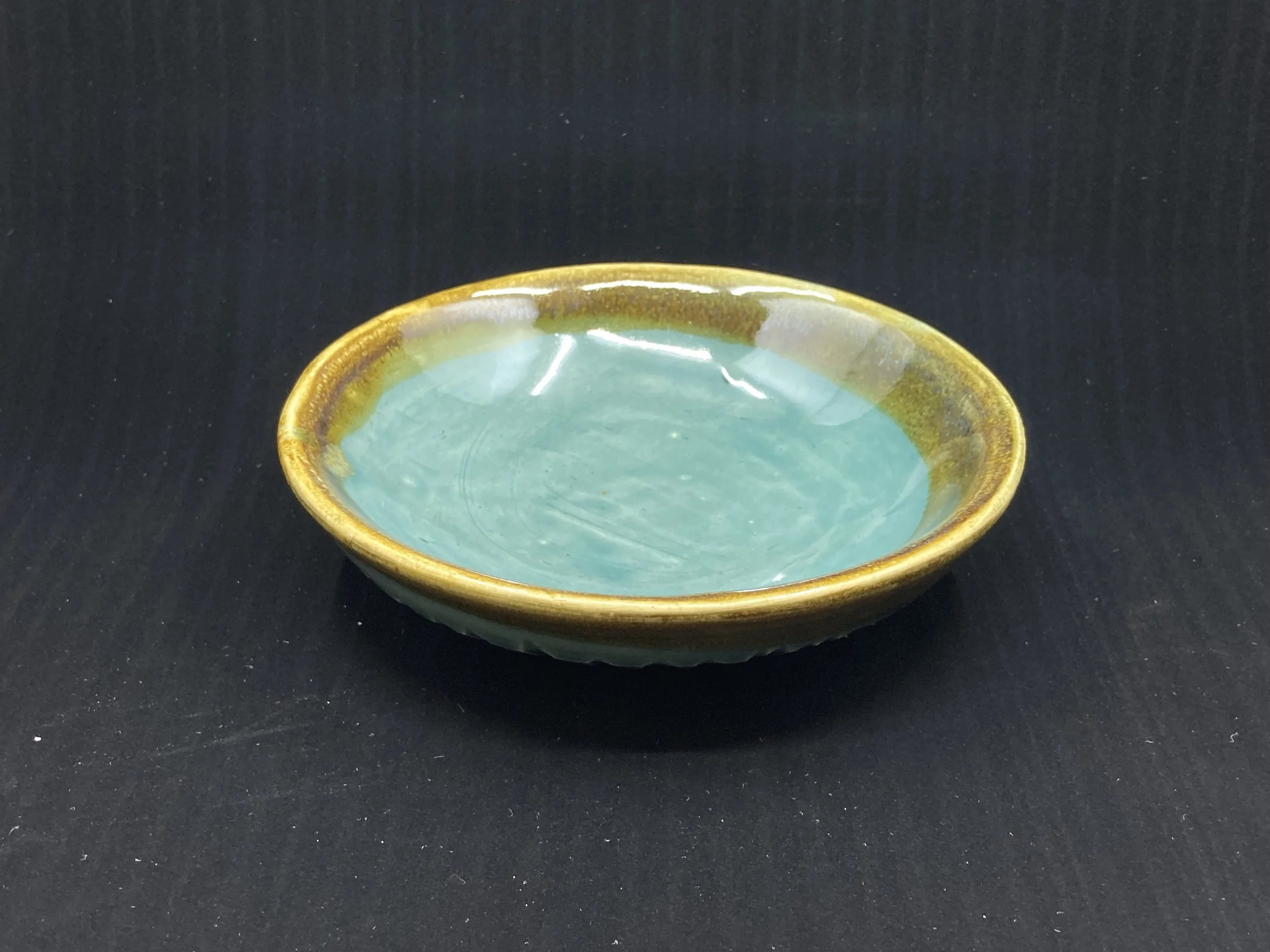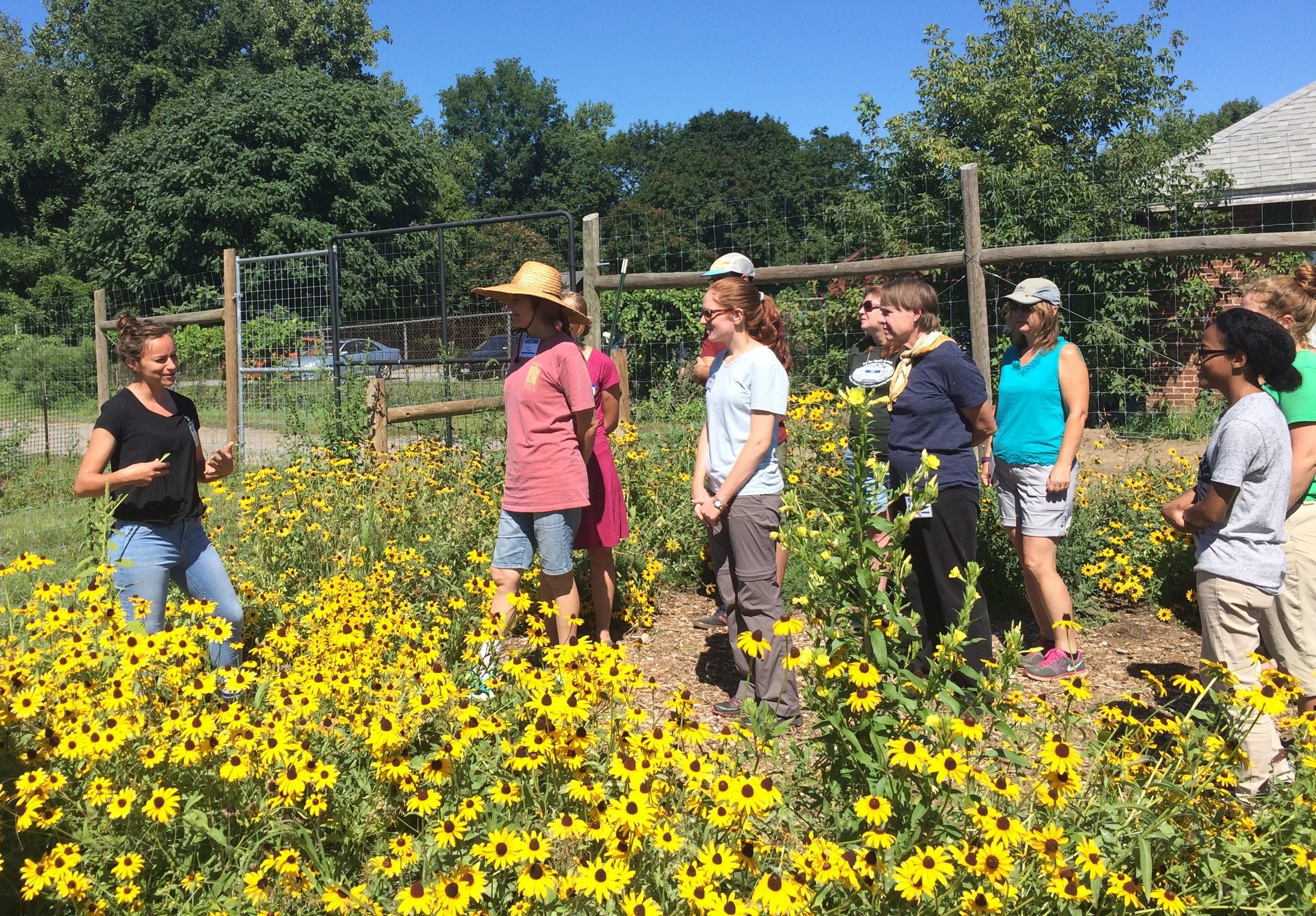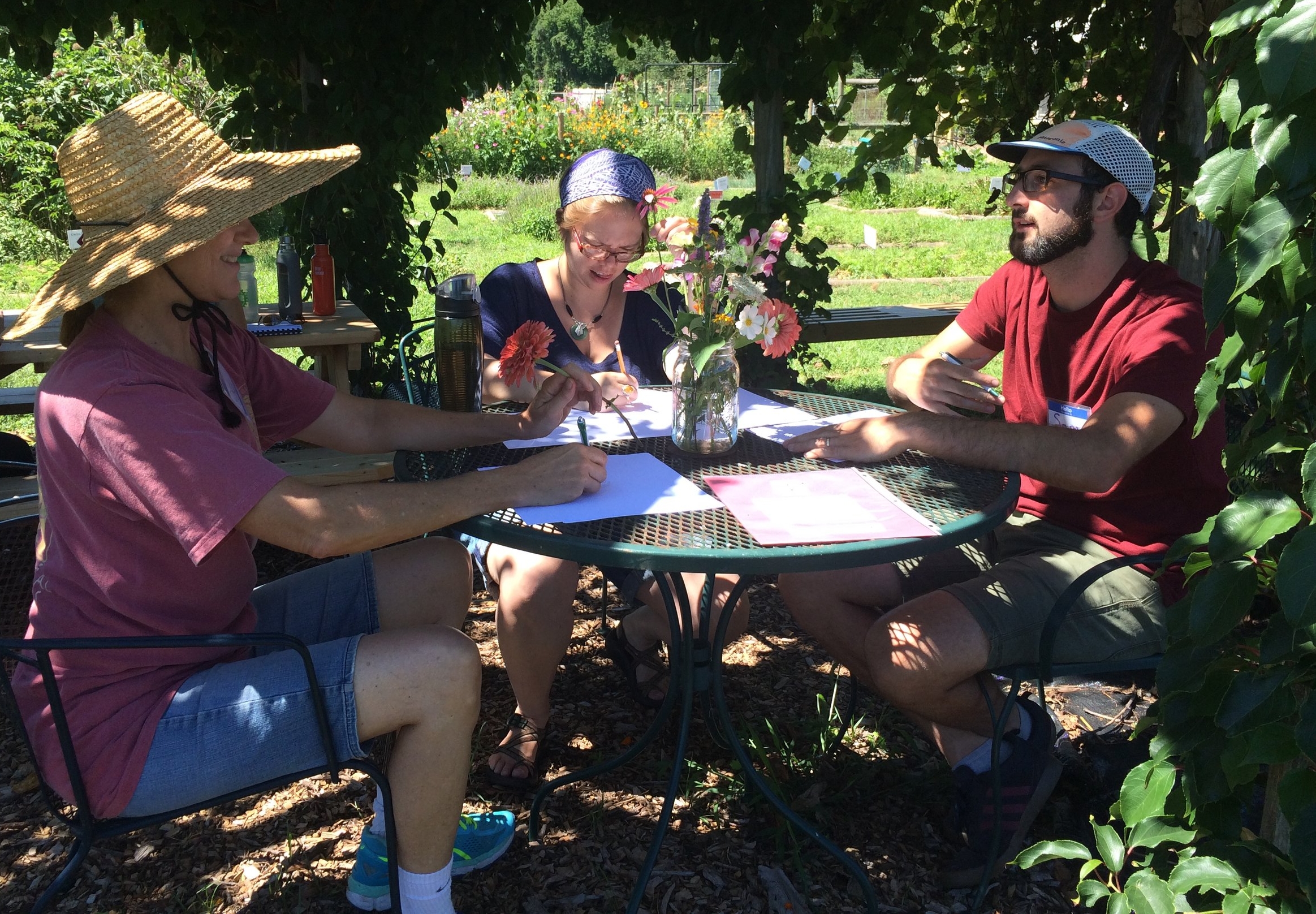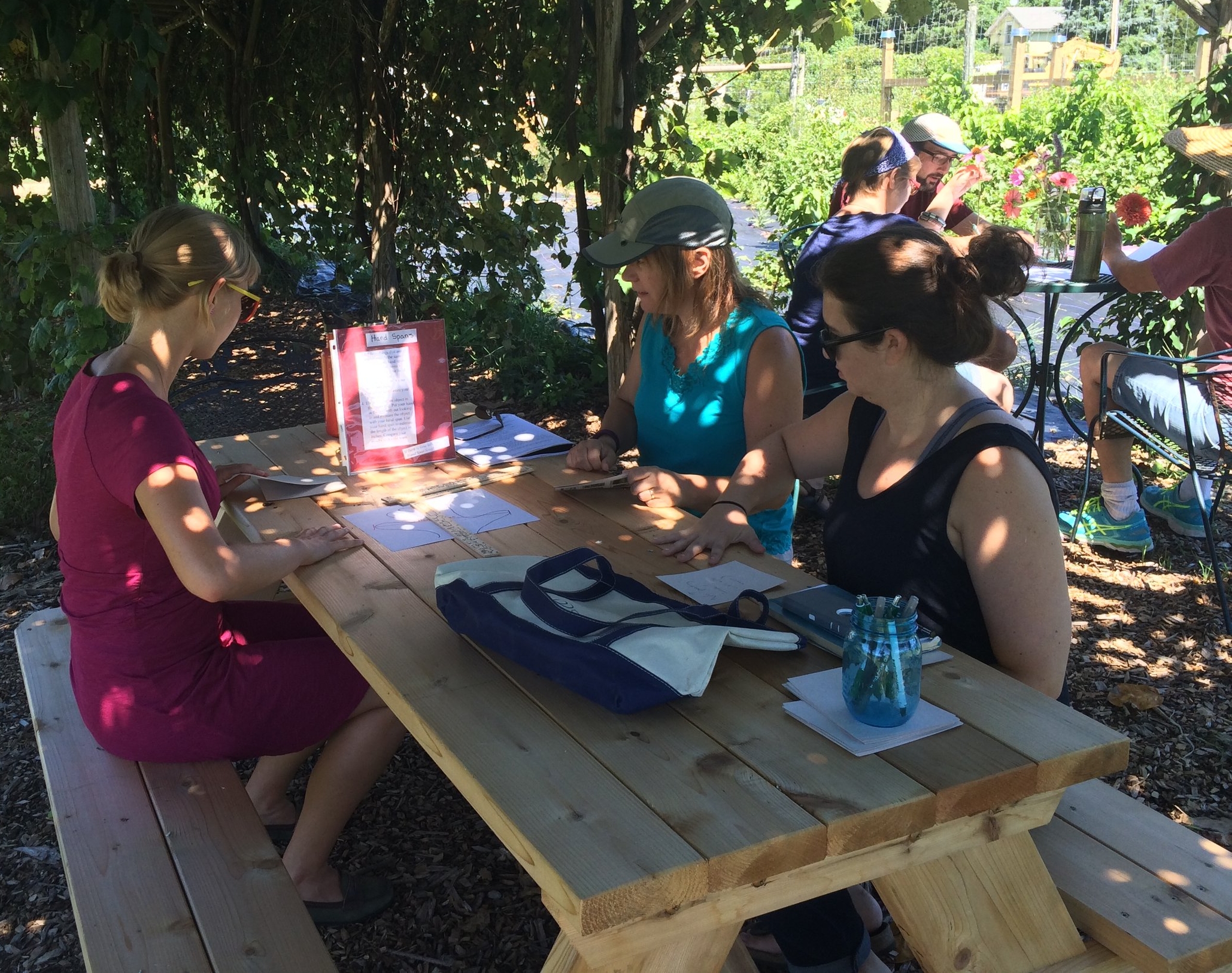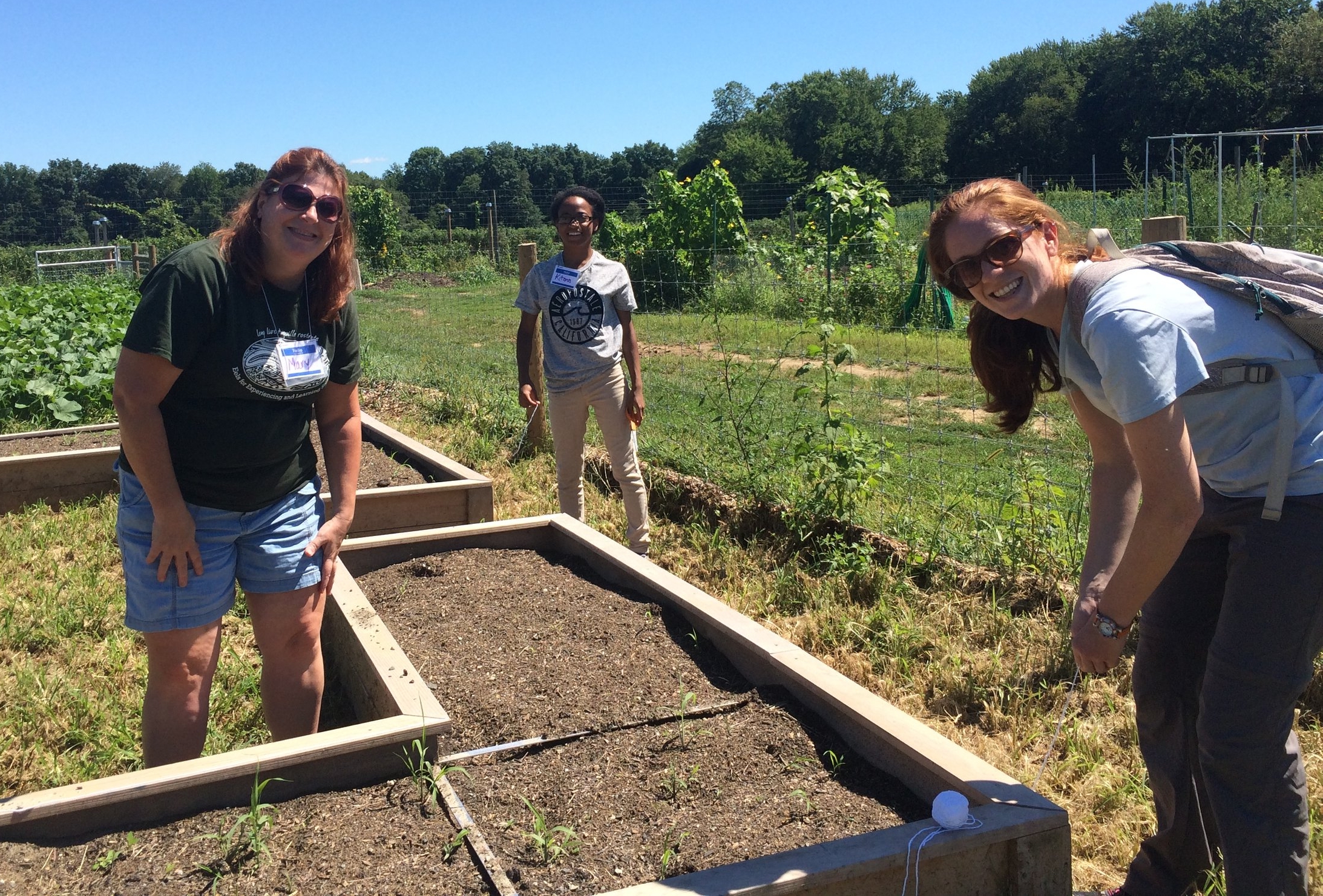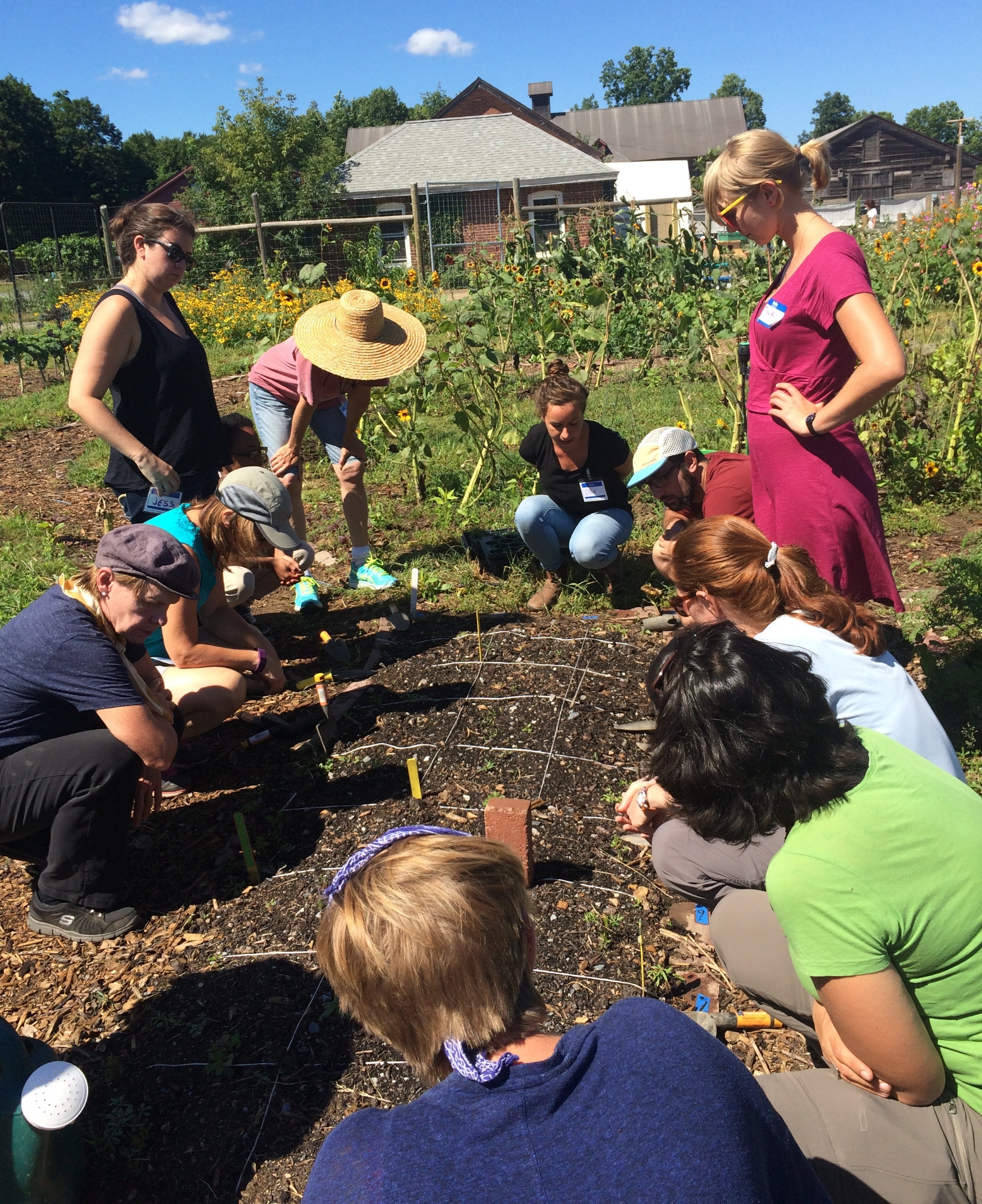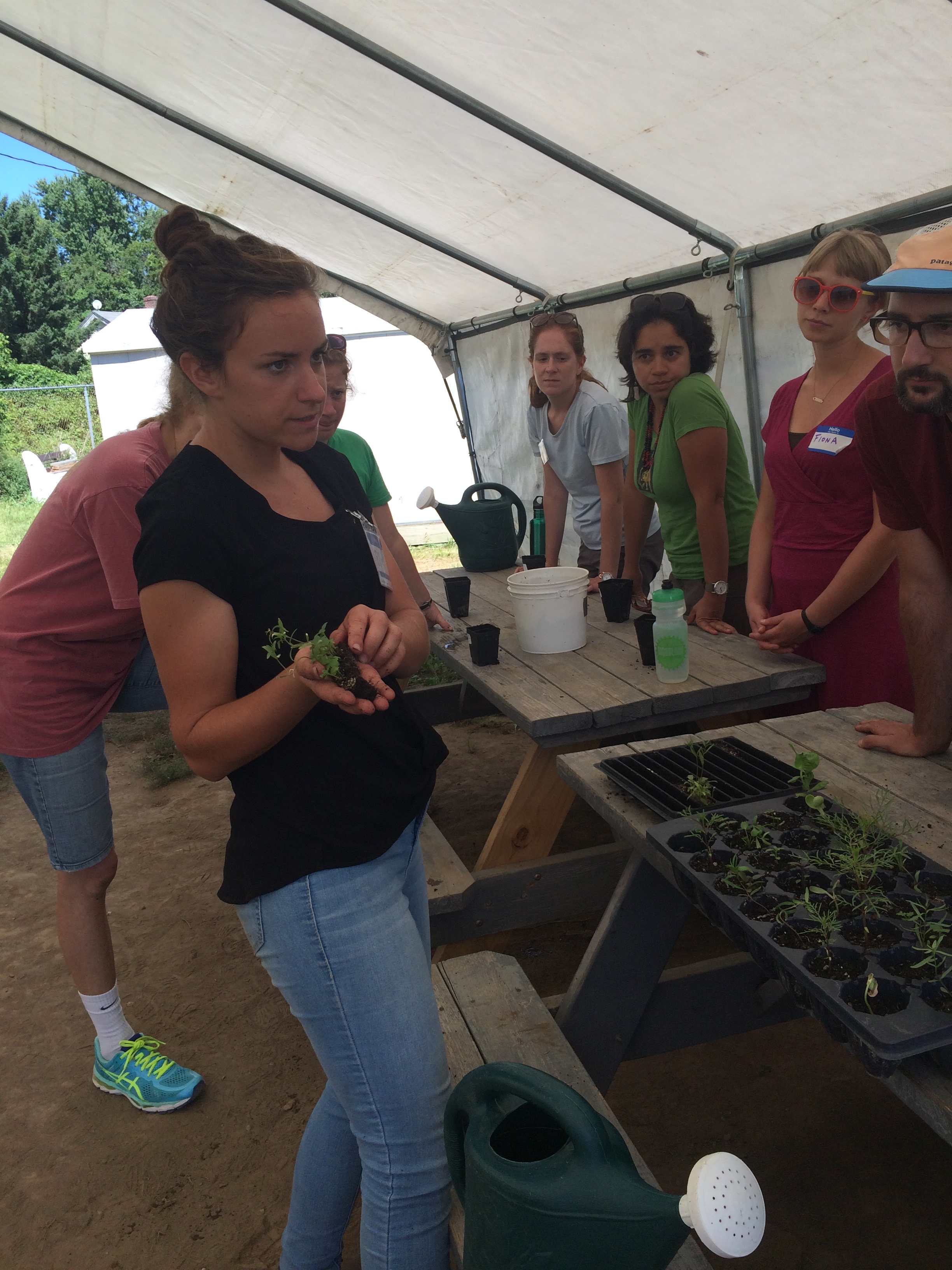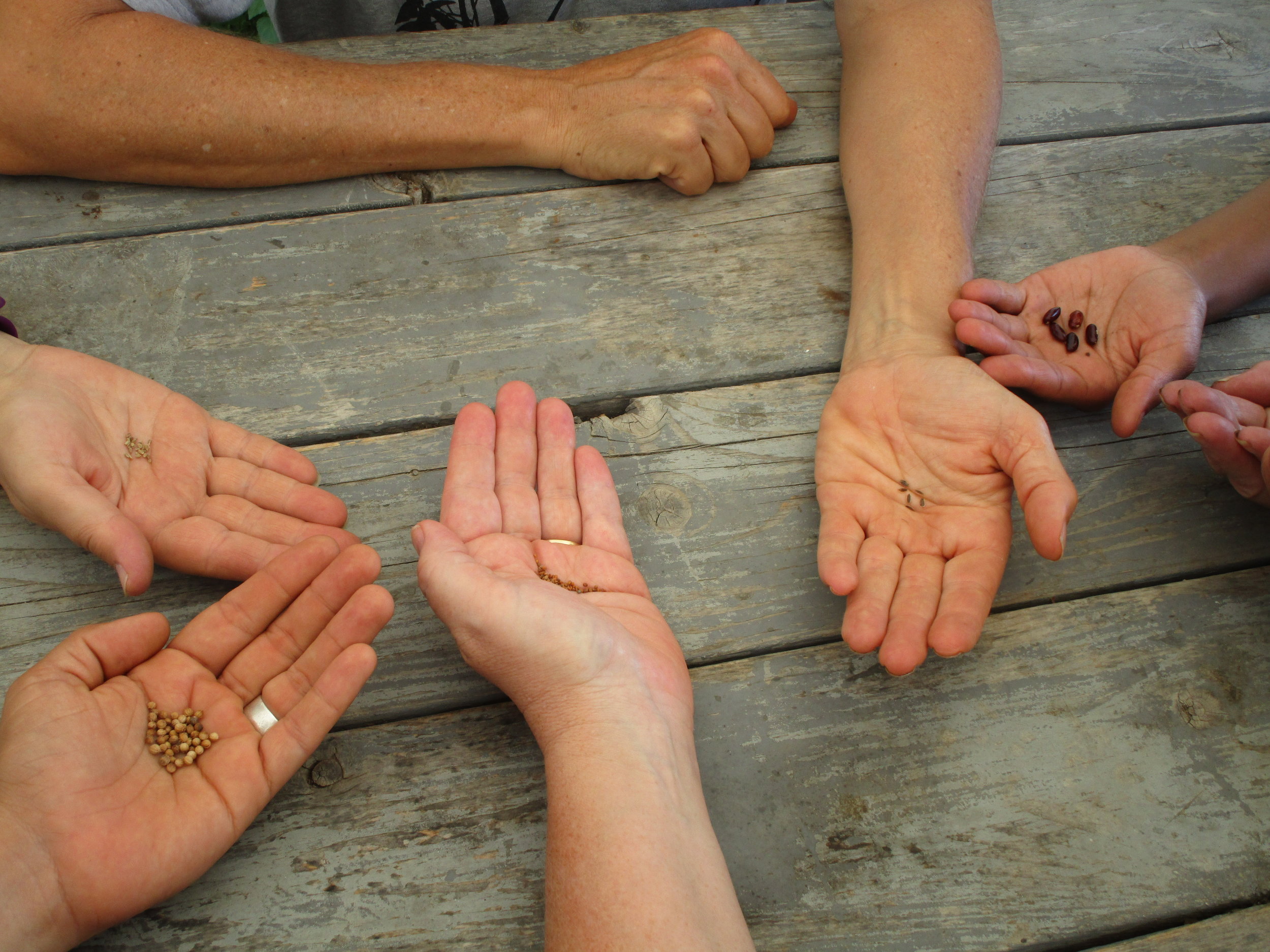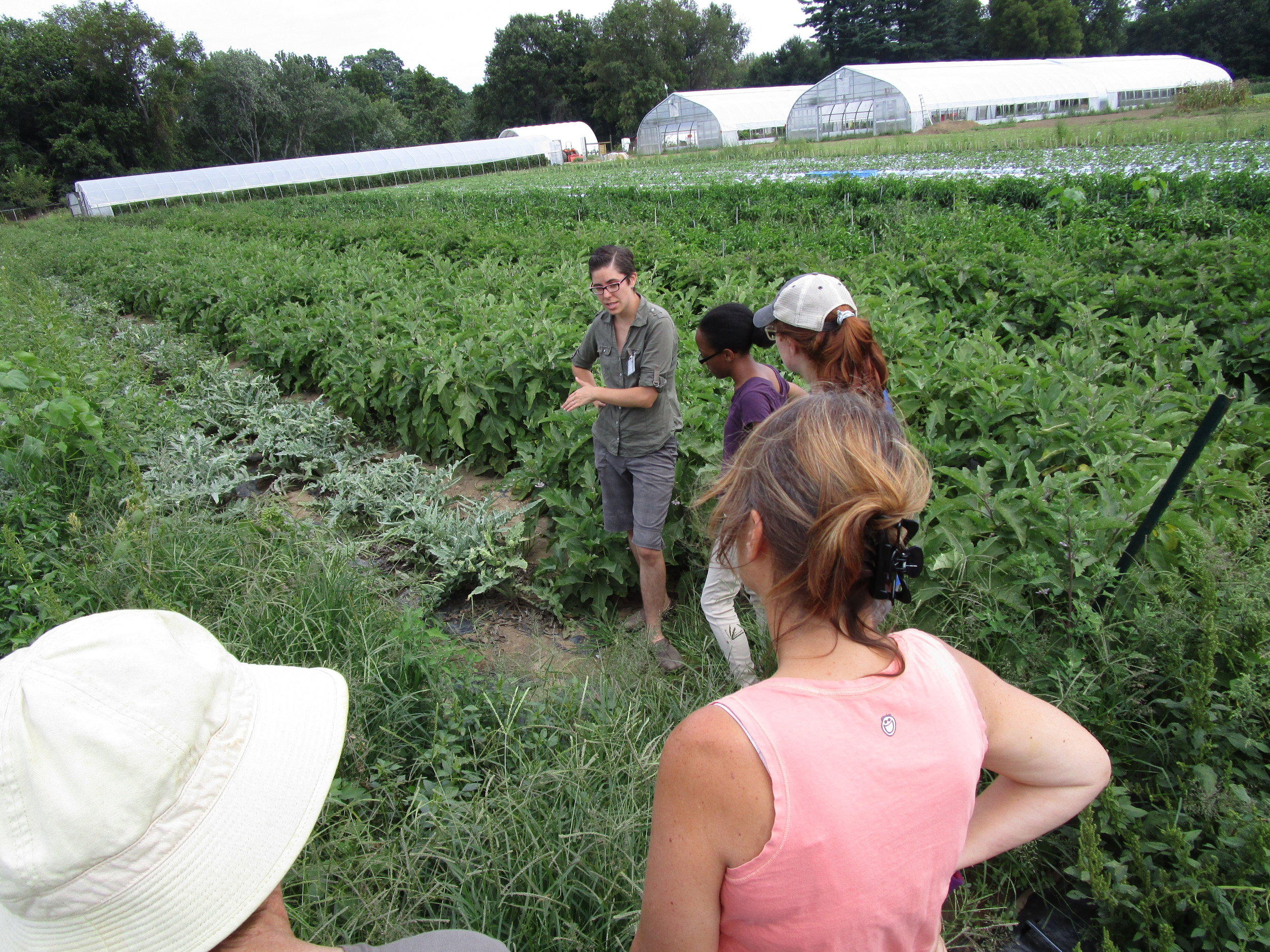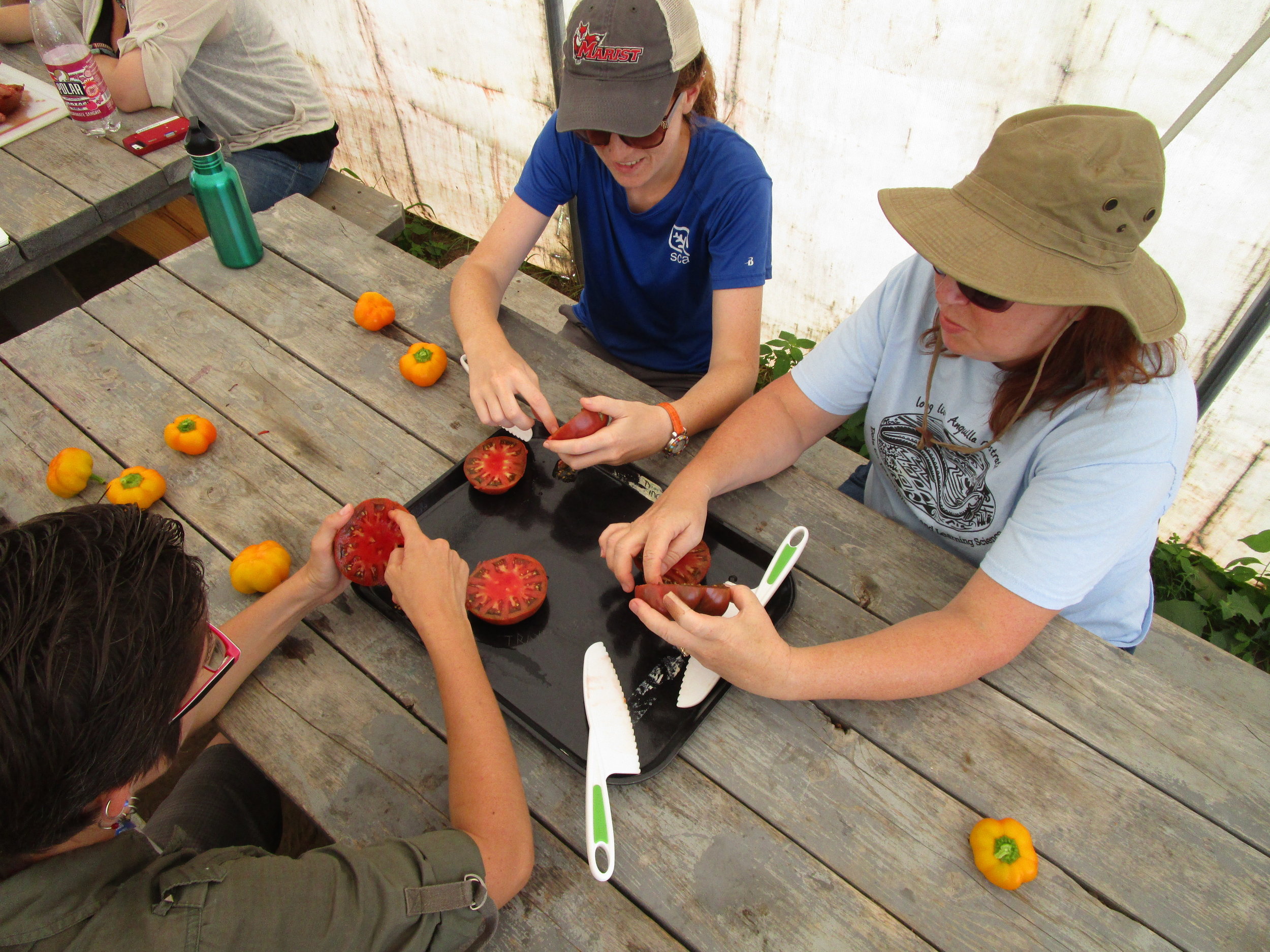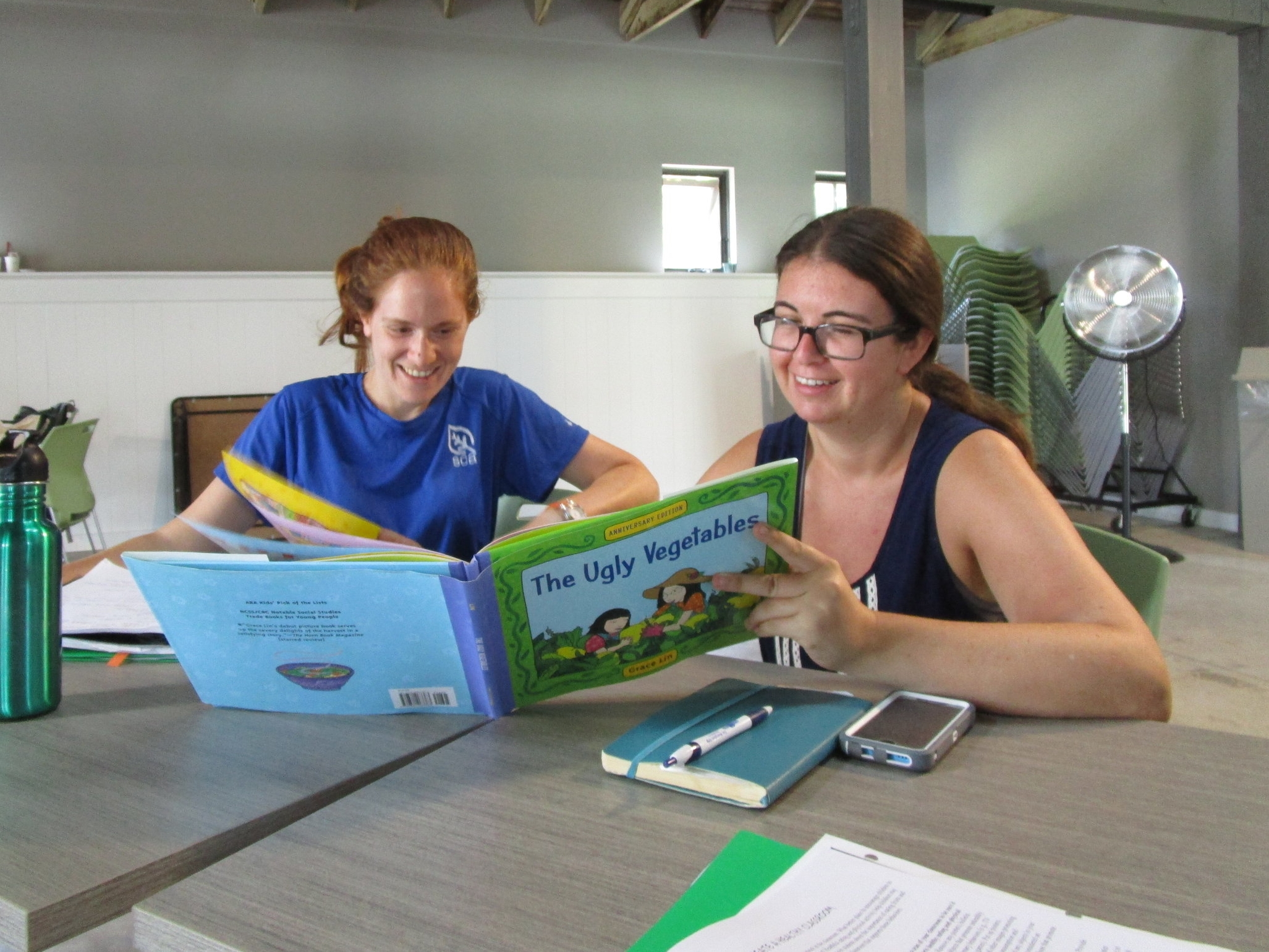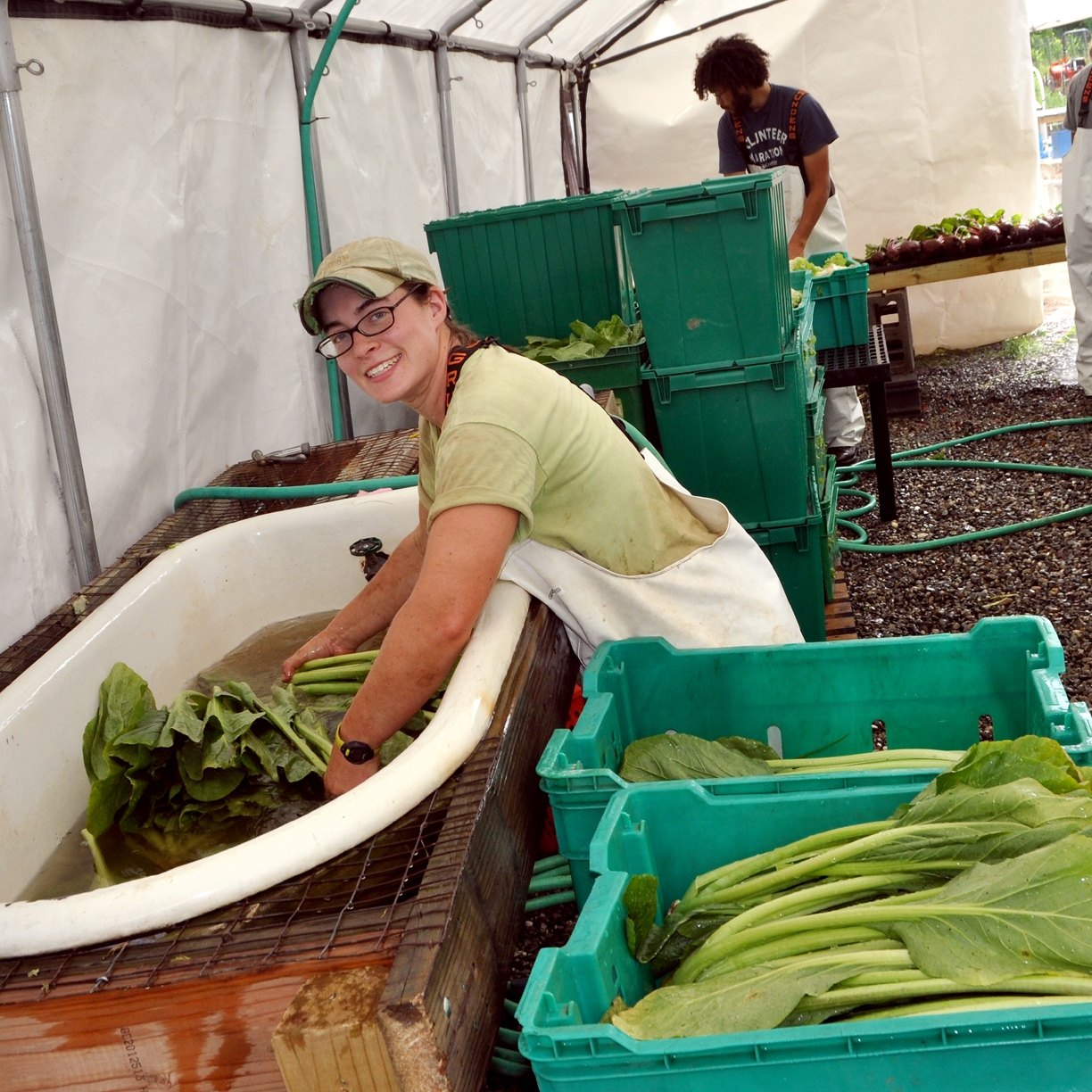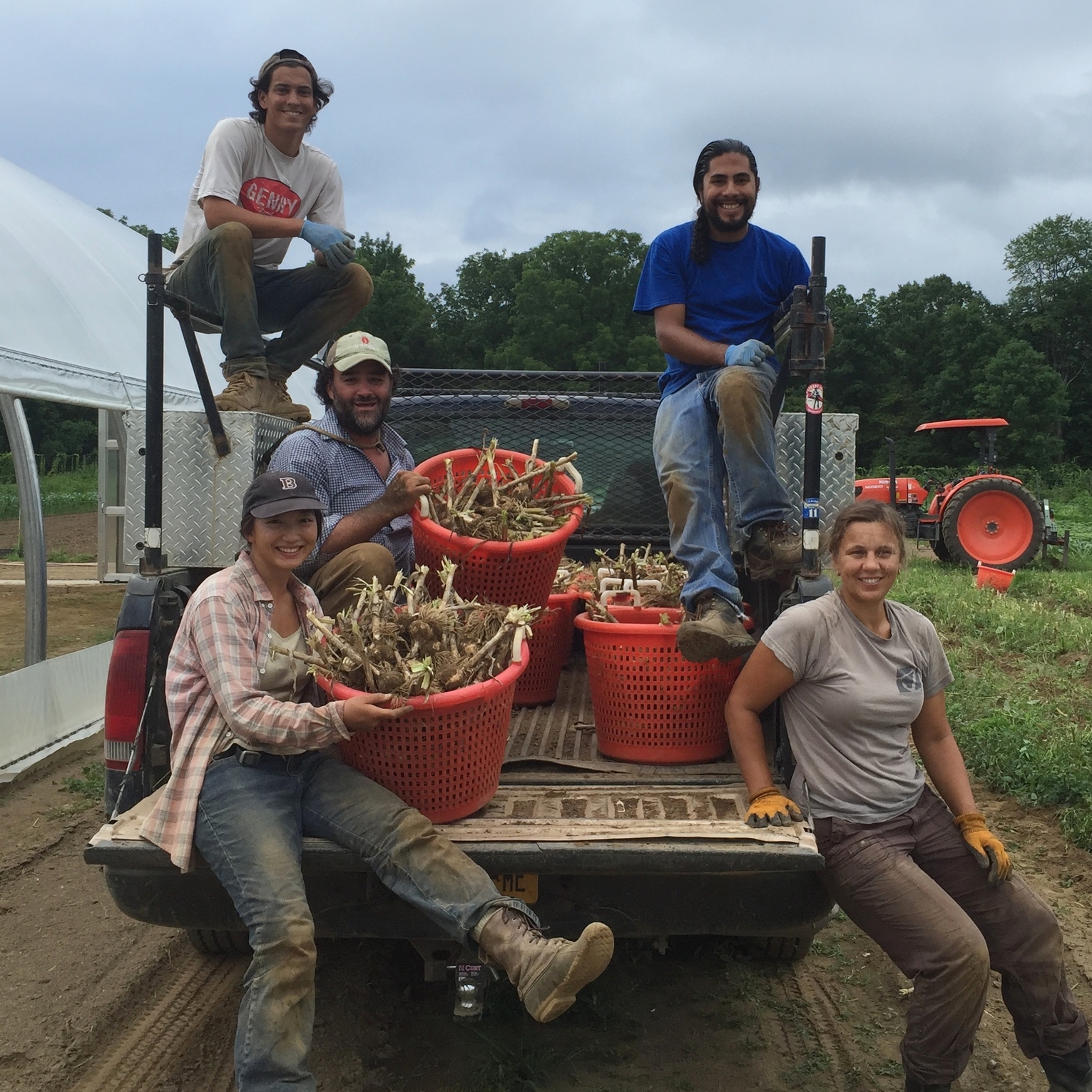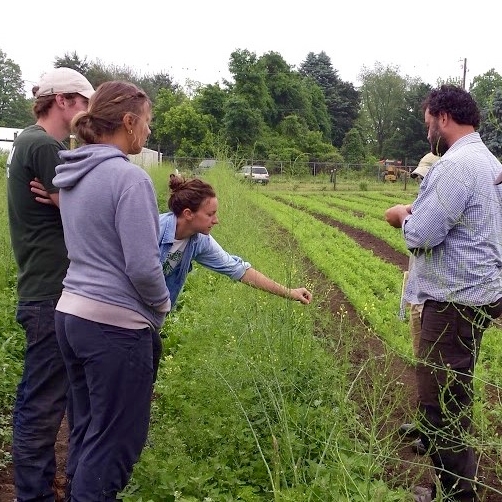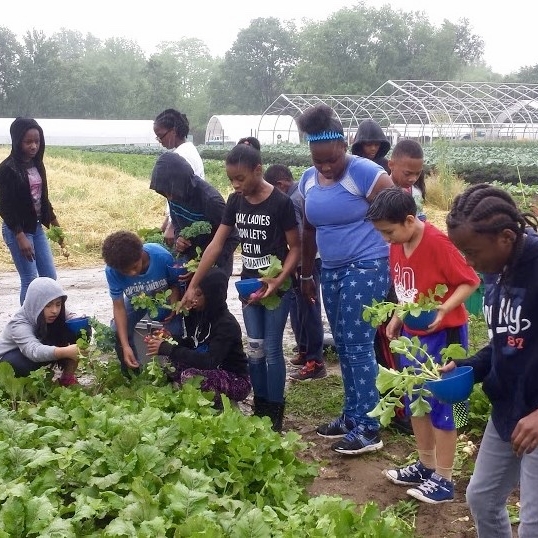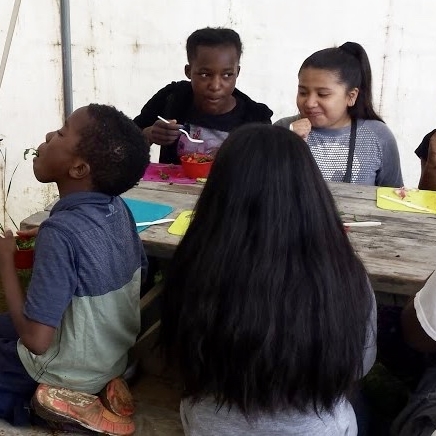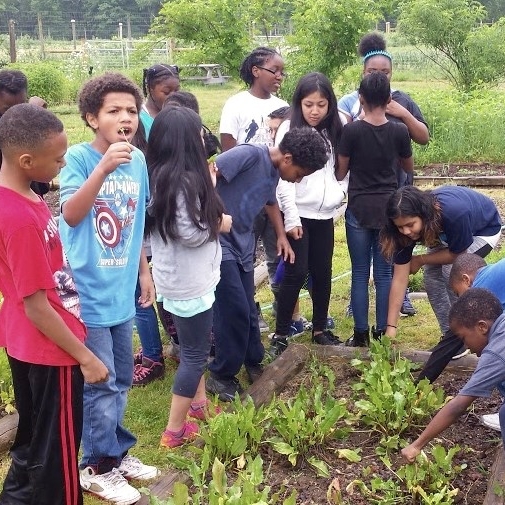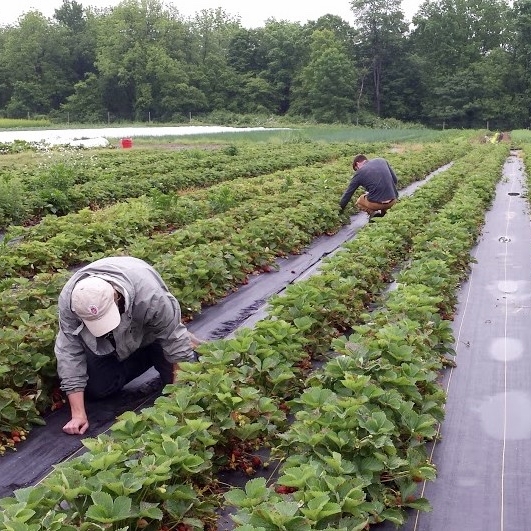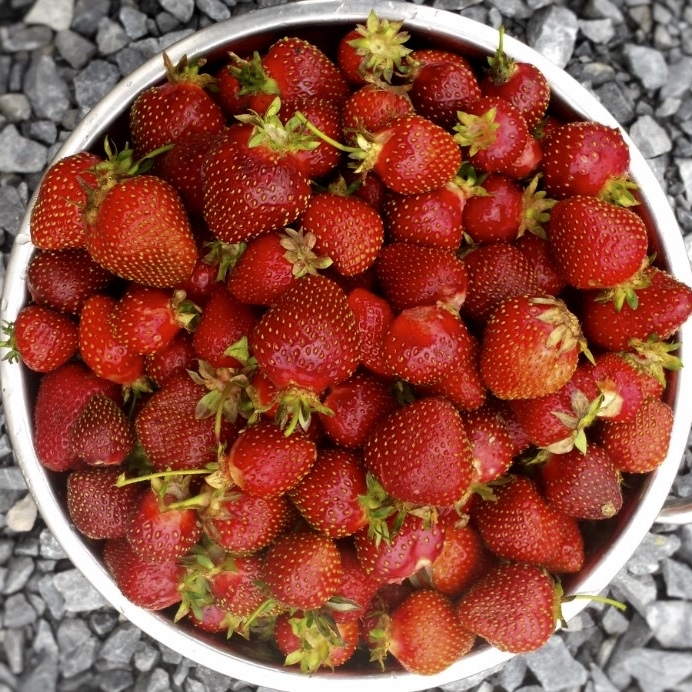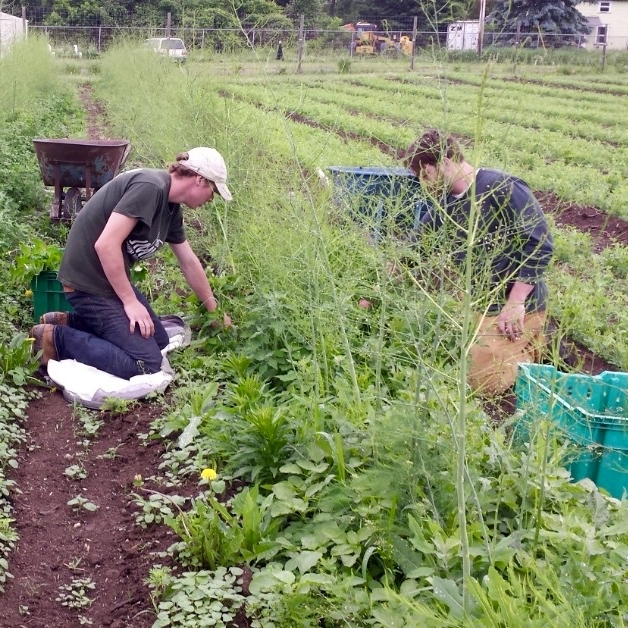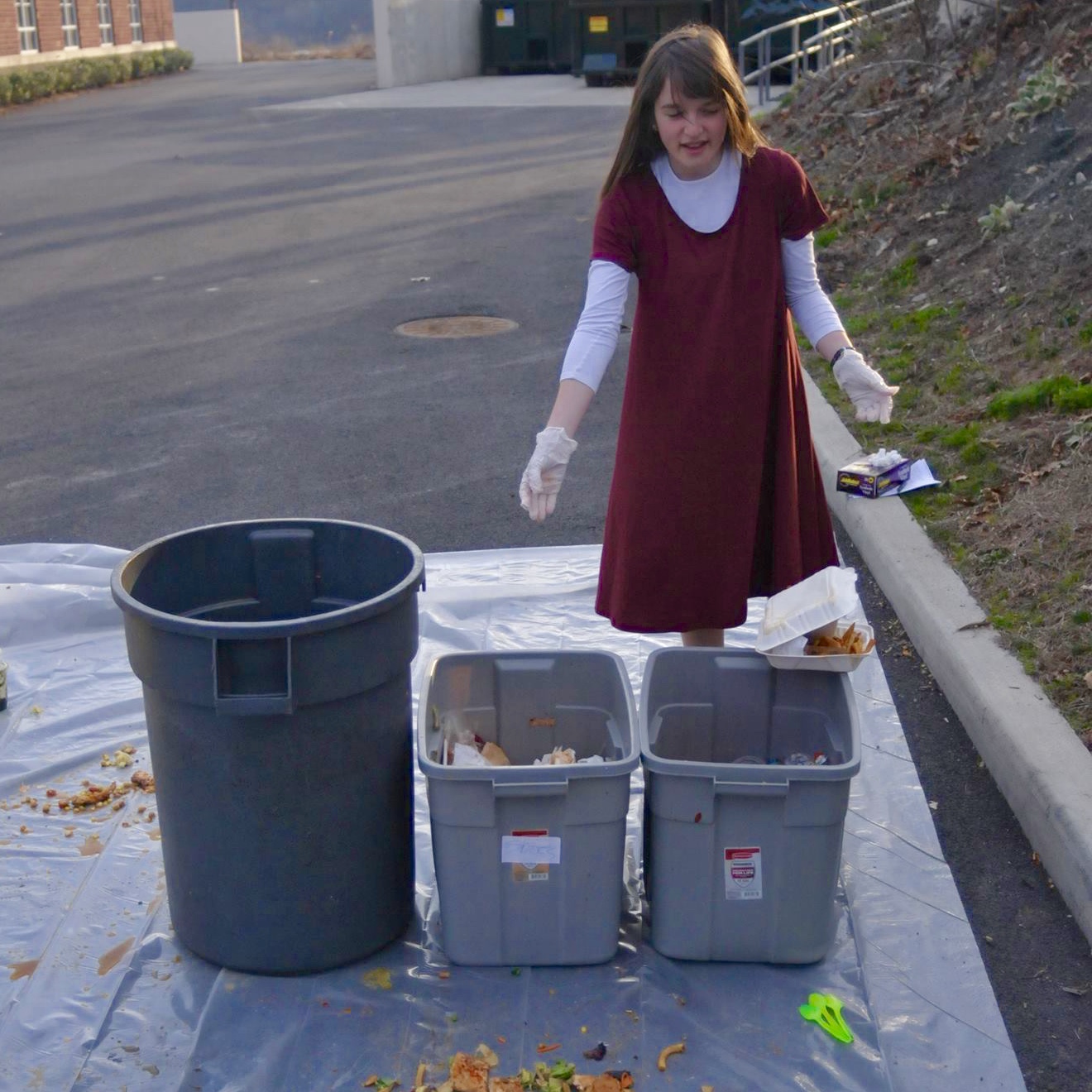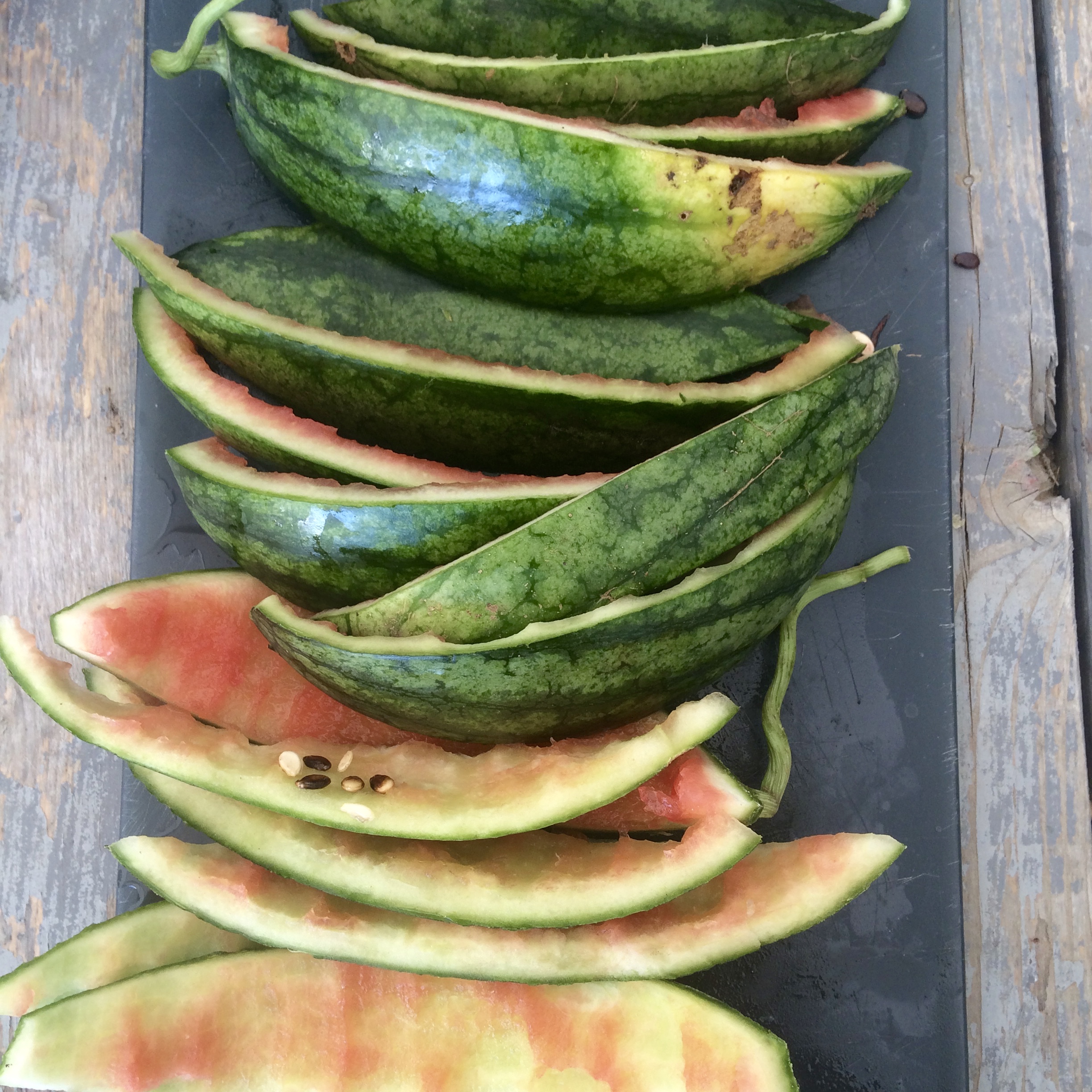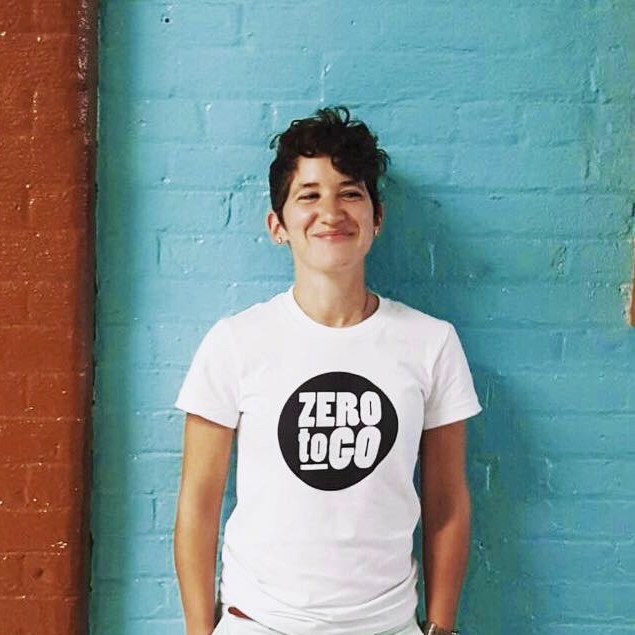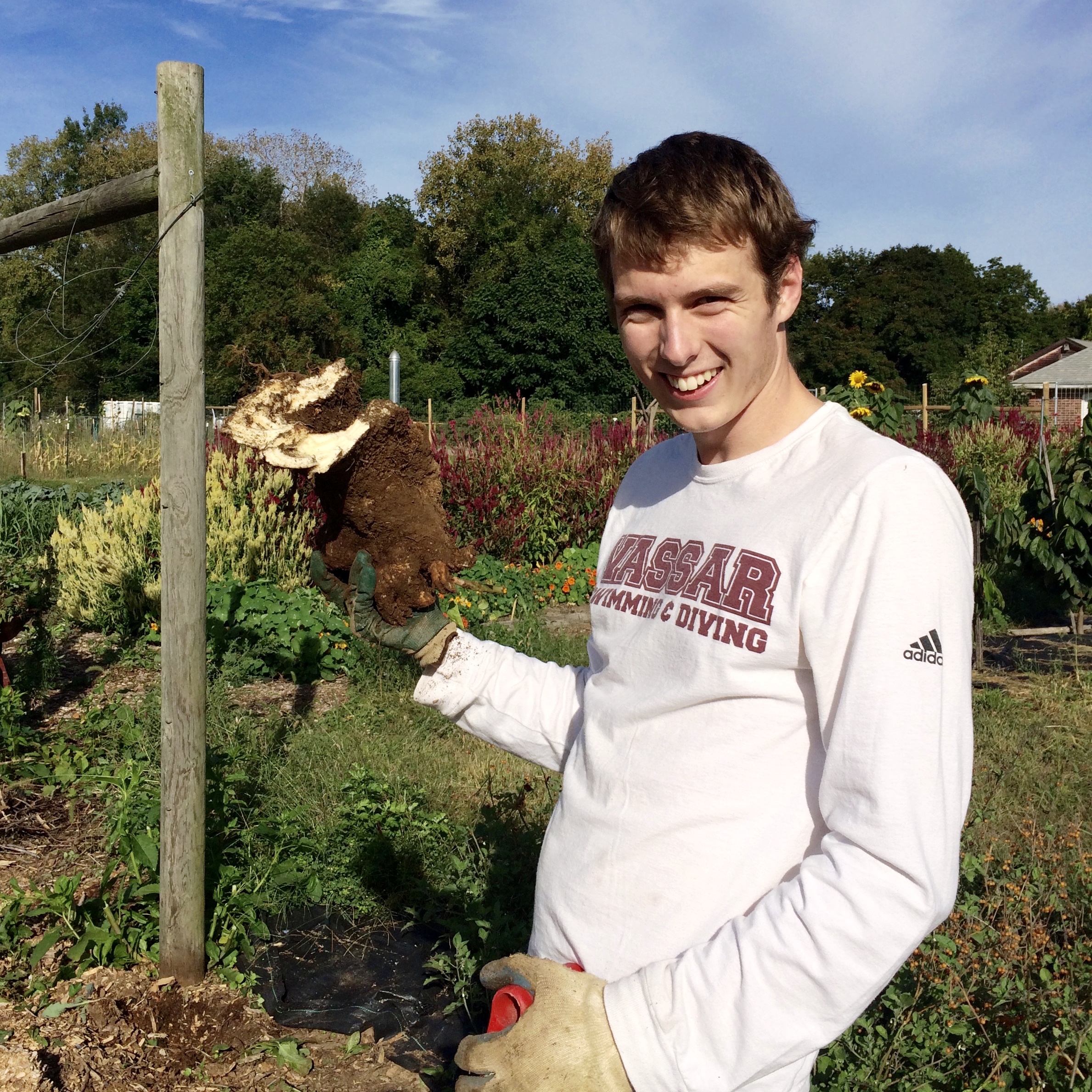By Lauren McDonald
Weed management is one of the biggest challenges for organic growers, and a large percentage of our labor hours are dedicated to this never-ending pursuit! Our goal is to get the weeds out when they’re small, and we have various tractor implements and hand tools to help make this possible. We never want weeds to go to seed- one of our common weeds, amaranth or pigweed, can produce over 100,000 seeds per plant! Weeding is especially important in trying to promote plant health because when plants are stressed because they are competing for light, water, and nutrients, they are more susceptible to diseases and attacks from insects. Weeding also promotes airflow around the plants, consequently reducing fungal diseases, and helps make harvesting more efficient and pleasant.
Before we plant, we go through a process called stale seed bedding. This means that we prepare the soil a few weeks before we’re going to plant so that weed seeds can germinate and then we can knock them back either with a shallow rototill pass or another implement. As soon as our transplants have established or after direct seeded crops have sprouted, we follow with various cultivating implements on our electric Allis Chalmer G tractor as well as rear-mounted ones on the smaller of our Kubota tractors. We use a basket weeder (above left) when the plants and weeds are very small. The baskets roll as you drive forward and disturb just the top layer of soil to dislodge sprouting weeds. Once the plants are bigger, we use a spring-loaded tine weeder (below right). The tines bounce off deeply rooted veggie plants and disturb the top few inches of soil in order to lift up and dry out weeds. We have additional implements that just target weeds in the furrows between beds.
Last year we also purchased a new Precision Cultivator/Hoeing Machine from the Dutch company HAK (below left) that will take our weed management to the next level. As we attempt to optimize our weeding strategies, we want to work on cultivating as close to plants as possible without damaging them and figuring out better ways to weed in between the plants in each row. Our current implements are very effective between rows, but as many of you know because you’ve done it during work hours, we end up hand weeding right around plants. The precision cultivator has many different attachments, all of which can be adjusted to our specific bed dimensions and crops. We’re looking forward to trying the rubber finger-weeders that rotate and interlock in a way that should knock out in-row weeds right up to the base of plants, reducing hand weeding by 40-60%. Remember all the hours you may have spent with us last year weeding carrots, onions, and kale? Imagine cutting that in half!
In addition to mechanical cultivating we use different types of ground covering to block weeds, help protect soil structure, and hold moisture. We lay Biotelo biodegradable black plastic or reusable landscape fabric for the crops that are in the ground for the longest amount of time through the season. This includes all of our tomatoes, peppers, eggplant, cucumbers, squash, melons, onions, leeks, and celeriac. We have to hand weed in the holes around the plants, but that is an incredibly quick process if we do it early, compared to how many tractor passes (which eventually would be impossible once plants are too tall) or rounds of hand weeding or hoeing we’d need to fight the weeds without plastic. In the blueberries and raspberries we similarly use wood chip mulch to prevent weeds.
Inevitably there will be sections that despite all of these forms of attack will still have big weeds, so we pull those by hand or use scuffle hoes. Perhaps that’s a comfort to some of you, who like me, find weeding to be satisfying and meditative work. Sometimes our team likes to play word and guessing games while hand weeding, so please do join in whenever you are weeding with us!





